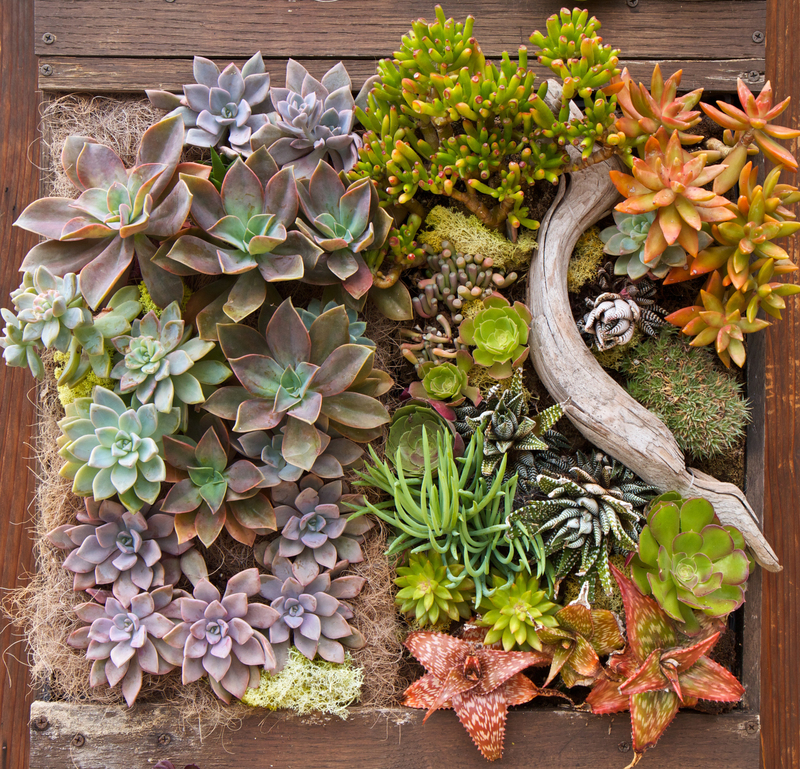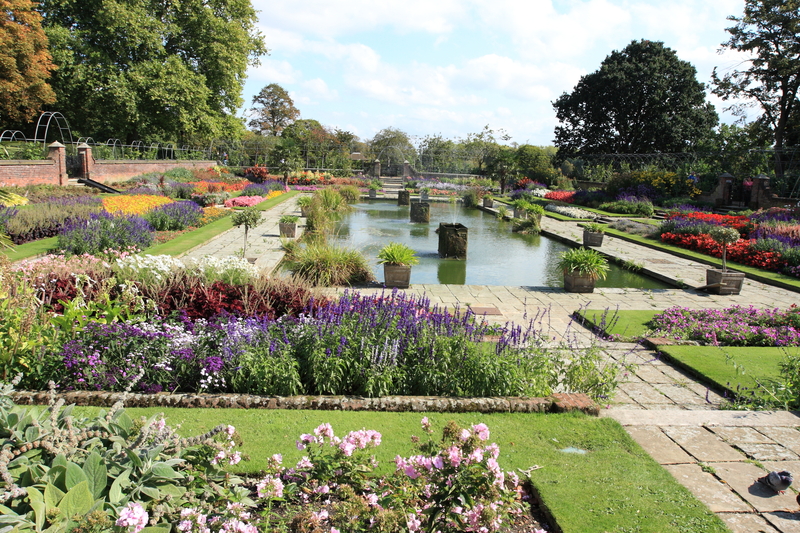Nurturing Dreams: Beginning a Garden Revitalization
Posted on 14/08/2025
Nurturing Dreams: Beginning a Garden Revitalization
Imagine stepping into your backyard or community space, closing your eyes, and picturing a vibrant, flourishing garden where beauty and tranquility reign. This dream is within reach for everyone--even if your current garden is a bare patch of earth or a neglected jungle of weeds. Garden revitalization is an inspiring journey, blending practical skills with creativity, and yielding mental, physical, and environmental rewards. If you are ready to embark on nurturing dreams through beginning a thriving garden transformation, read on for comprehensive guidance.
What is Garden Revitalization?
Garden revitalization refers to the process of transforming an existing, often neglected, green space into an attractive, healthy, and useful garden. Whether you have a sprawling backyard or a modest balcony, revitalizing your garden is about breathing new life into it--creating an oasis that reflects your vision, supports biodiversity, and brings you joy.
Why Begin a Garden Restoration Project?
- Enhance Beauty: Revitalized gardens add significant aesthetic appeal to any property.
- Boost Mental Wellbeing: A well-kept garden can lower stress, increase happiness, and provide a mindful escape.
- Promote Biodiversity: Gardens that incorporate diverse plants support bees, butterflies, and other local wildlife.
- Increase Property Value: Attractive gardens improve curb appeal and may raise property prices.
- Foster Community: Shared garden revitalization nurtures social connections and a sense of ownership.

Assessing Your Starting Point: Garden Self-Audit
Every dream begins with a solid understanding of the present. Beginning a garden revitalization project starts with a thorough assessment.
Steps for a Garden Audit
- Observe: Walk around your garden or green space at different times of the day. Notice which areas get sun, which parts are shaded, and any persistent issues, such as poor drainage or compacted soil.
- List Existing Features: Are there trees, shrubs, hardscapes, or legacy plants worth saving? Are there views you want to enhance or hide?
- Soil Health Check: Dig a few small holes and examine the soil. Is it sandy, clay-like, or rich and loamy? Consider purchasing a simple soil testing kit for pH and nutrient analysis.
- Identify Pests or Weeds: Note any recurring pests or invasive weeds that may require management.
- Photograph the Space: Taking before photos will help you chart your progress and plan more effectively.
Clarifying Your Garden Vision
Revitalizing your garden is not just about fixing problems; it's about nurturing a dream. Start by defining what you want from your refreshed garden:
- Relaxation: Do you desire a peaceful retreat with a seating area for reflection?
- Entertaining: Would you like space for social gatherings, barbecues, or outdoor dining?
- Wildlife Habitat: Are you hoping to attract birds, bees, or butterflies?
- Grow Food: Would you like to cultivate herbs, vegetables, or fruit trees?
- Children's Play Area: Do you need a safe, engaging environment for kids?
Tip: Create a mood board or Pinterest collection for garden designs that inspire you. This will help clarify your priorities as you move forward with your garden revitalization journey.
Planning Your Garden Revitalization
Map Your Space
Sketch your property or use online garden planners to map out dimensions. Mark existing features and desired zones such as relaxation areas, borders, beds, paths, and focal points.
Choose a Garden Style
- Cottage Gardens: Romantic, overflowing beds with mixed flowers and foliage.
- Modern Minimalist: Clean lines, simple planting schemes, and sleek materials.
- Native or Xeriscape: Using drought-resistant native plants for sustainability.
- Wildlife Gardens: Native shrubs, meadows, ponds, or bee hotels for encouraging fauna.
- Productive Gardens: Incorporating raised beds or mixed cropping for edibles.
When planning a garden renewal, allow your own taste and climate conditions to guide major design decisions.
Soil Preparation: Foundation for Success
The single most important factor in garden revitalization is healthy soil. Whether you're working with sandy, clay, or tired soil, revitalizing the ground ensures a thriving garden in the future.
Steps for Improving Garden Soil
- Clear the Area: Remove debris, weeds, and sickly plants. Compost what you can.
- Aerate the Soil: Use a fork or aerator to loosen compaction, supporting root growth.
- Add Organic Matter: Work in well-rotted compost, manure, or leaf mold to boost fertility and structure.
- Mulch: Apply a thick layer of organic mulch to suppress weeds, retain moisture, and slowly feed the soil.
- pH Adjustment: Based on your soil test, amend the soil with lime (to raise pH) or sulfur (to lower pH) if needed for chosen plants.
Note: Healthy soil is teeming with life. Avoid excessive tilling, chemical fertilizers, and pesticides that harm beneficial organisms.
Plant Selection: The Heart of Revitalization
Choosing the right plants is crucial to a successful garden transformation. Consider your climate zone, sunlight levels, and personal preferences.
- Start Small: Prioritize a few feature plants or beds, then expand as you gain confidence.
- Choose Right Plant, Right Place: Group plants with similar needs (light, water, soil) together so they thrive.
- Mix Evergreen and Seasonal Plants: Combine year-round structure with bursts of seasonal color.
- Diversity: Maximize visual interest and wildlife value with a range of plant types--trees, shrubs, perennials, bulbs, and annuals.
- Native Species: Embrace local plants for lower maintenance and increased biodiversity.
Popular Plant Choices for Garden Renewal
- Flowering Perennials: Lavender, Echinacea, Daylilies, Salvia, Coreopsis
- Ornamental Grasses: Fountain Grass, Switchgrass, Blue Oat Grass
- Hedges and Structure: Boxwood, Holly, Viburnum
- Edibles: Herbs (basil, rosemary), Fruit bushes (blueberries), Tomatoes, Lettuces
- Wildlife Favorites: Milkweed for butterflies, Native wildflowers, Bee balm, Coneflower
Embracing Sustainability in Garden Revitalization
Sustainable gardening is at the heart of a modern garden revitalization project. Consider eco-friendly practices for a healthier, more resilient garden.
Eco-Friendly Gardening Tips
- Water Wisely: Install rain barrels or a drip irrigation system. Water early in the morning or late in the evening to minimize evaporation.
- Compost: Recycle kitchen and garden waste into valuable compost for your beds.
- Pesticide-Free: Control pests naturally through companion planting, hand-picking, or insect hotels.
- Reduce Lawn Size: Replace lawn with planting beds, wildflowers, or edible gardens for less mowing and more interest.
- Reuse and Upcycle: Reuse old containers, pallets, or terracotta pots as quirky garden features.
Phased Approach: Managing Your Revitalization Project
Dreams grow best with patience! Revitalizing a garden often takes time, especially if you're working solo. Breaking down the transformation into manageable phases keeps the process enjoyable and achievable.
Suggested Phases for Garden Renewal
- Initial Clean-up: Remove weeds, pruned debris, and any structures beyond repair.
- Soil and Hardscape Preparation: Improve soil, fix drainage, and build paths or patios.
- Plant Structural Elements: Trees, hedges, and large shrubs, as these form the backbone of the garden.
- Infill Planting: Add perennials, bulbs, annuals, and edible plants for seasonal interest.
- Add Finishing Touches: Mulch, decorative features, art, or lighting to enhance the space.
Maintenance: Sustaining Your Revitalized Garden
A renewed garden continues to thrive only with regular care.
- Water consistently--new plants need routine moisture until well-established.
- Mulch annually to suppress weeds and nourish the soil.
- Prune and deadhead as needed to encourage blooms and manage form.
- Feed naturally--top-dress with compost or use organic liquid feeds during the growing season.
- Monitor for pests or disease--early intervention is key to healthy plants.
Common Challenges and How to Overcome Them
No garden revitalization project is without hurdles. Here are some typical challenges and solutions:
- Persistent Weeds: Mulching, regular hand-pulling, and planting groundcovers to shade out problem areas.
- Poor Soil: Repeated addition of organic matter, and considering raised beds for quick results.
- Limited Budget: Grow from seed, exchange plants, upcycle materials, and tackle one area at a time.
- Time Constraints: Schedule short, regular working sessions, and avoid tackling everything at once.
- Shade or Sun Issues: Choose plants adapted to existing light conditions rather than fighting nature.
Nurturing Dreams: Garden Revitalization for Every Space
You don't need acres to start nurturing your garden dream. Even urban balconies or small patios can be transformed with vertical planters, container gardening, and clever design tricks.
- Use Planters Creatively: Stagger pots of different heights and styles for layered interest.
- Vertical Gardens: Attach planters to walls, fences, or trellises for a lush, green screen effect.
- Herbs and Edibles: Select compact varieties for windowboxes or balcony railings.
- Pocket Meadows: Wildflower seed mixes can transform even a tiny strip of soil.
- Seating and Lighting: Even in a small space, include a chair, fairy lights, or lanterns to make it inviting.

The Emotional Rewards of Garden Transformation
Every hour spent nurturing a garden brings emotional dividends:
- Pride in Achievement: Witnessing the transformation from a neglected area to a living work of art is deeply satisfying.
- Therapy Through Nature: Gardening has proven therapeutic benefits for mental health and stress reduction.
- Connection and Community: Sharing produce, seeds, or experiences draws people together.
- Legacy: Revitalized gardens provide lasting joy and environmental benefits for generations.
Conclusion: Begin Your Garden Revitalization Journey Today
Every garden holds the promise of renewal. Whether you're starting with a blank canvas or reclaiming overgrown beds, beginning a garden revitalization is about envisioning new possibilities, planning thoughtfully, honoring environmental sustainability, and finding joy in every bud and bloom. With patience, creativity, and a willingness to learn from setbacks, you'll soon nurture your own dream garden--one that grows richer and more beautiful with every passing season.
Are you ready to nurture your dream? Start your garden transformation today, and watch as your vision takes root and blossoms--for yourself, your community, and the planet.
- Assess your space.
- Define your vision.
- Plan and prepare the soil.
- Select plants thoughtfully.
- Care for your garden.
- Embrace the rewards of revitalization!
Happy gardening--and may your revitalized garden be a celebration of life, growth, and nurtured dreams.

